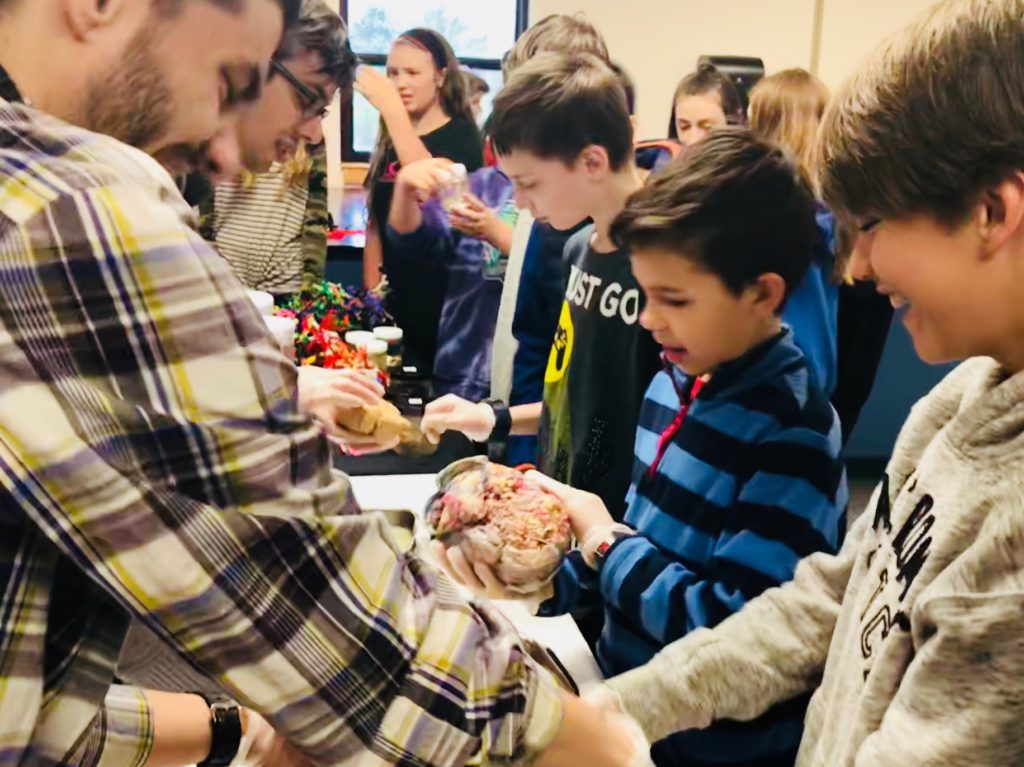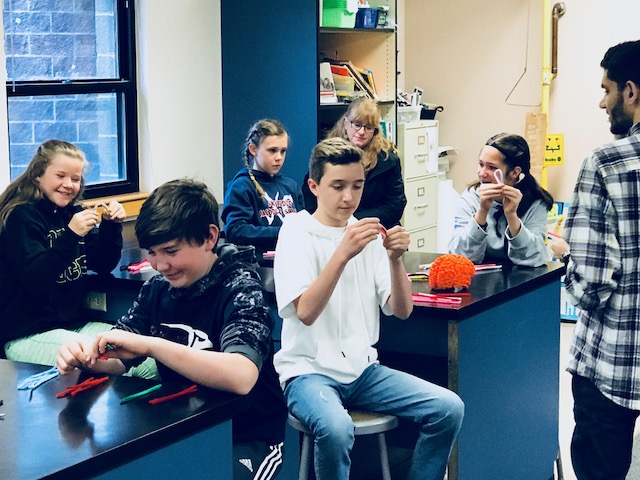Post by Joey Seuferling, NW Noggin Resource Council member
Volunteers of NW Noggin recently visited Skyridge Middle School for a second time this spring!

LEARN WHAT WE DID IN MARCH: Curiosity’s Sky-High at Skyridge!
Again we brought together Art and Neuroscience with depolarizing passion and enthusiasm. Our volunteers were excited as ever to bring human brains and pipe cleaner neurons to another classroom.


LEARN MORE: STEAM Art Projects
Skyridge students had many intriguing questions for us, though one stood out for me. How do alcohol and marijuana affect the brain, and is one worse than the other? Are they both detrimental to the healthy development of our brains?

This question has been asked before, and I link below to earlier posts…

Yet during development, drugs often carry bigger risks, since neurons (particularly those in your frontal lobes) are busy pruning and refining essential brain networks based on your life experience. If your adolescent life experience primarily involves drug seeking and use – instead of your friends, family, sports, music, arts and academics – there is increased risk that developing motivational and decision making networks will be impacted and focus instead on these substances, and you may develop a substance use disorder…

“The mind, once stretched by a new idea, never returns to its original dimensions” –Ralph Waldo Emerson
LEARN MORE: Substance Use Disorders
LEARN MORE: Adolescent Brain Development and Drugs

But how do marijuana and alcohol compare?

Marijuana certainly affects the adolescent brain. It can acutely impair short term memory, and may influence long term learning when a person is exposed to the drug at an early age. Some studies also report changes in motivational and reward pathways. However, as marijuana remains a Schedule I drug at the federal level (i.e., it’s still legally (though inaccurately) considered to have “no currently accepted medical use and a high potential for abuse,”) research has been limited, and papers often report conflicting results.

LEARN MORE: What are marijuana’s long-term effects on the brain?
However, many beneficial therapeutic effects of marijuana have been found in adults. The drug is used to effectively treat nausea secondary to chemotherapy and can stimulate appetite. Marijuana is also used to replace or as a much less deadly adjunct to the use of addictive opioids for the treatment of chronic pain, which represents a huge stride in the fight against an ongoing opioid epidemic.
LEARN MORE: Is marijuana safe and effective as medicine?
LEARN MORE: Marijuana legalization means fewer opioid deaths
LEARN MORE: Autonomic Function @ Franklin

Alcohol, in contrast, clearly harms developing adolescent brains. Alcohol also impairs motor coordination and affects our judgement when making important decisions in the moment. And follow up studies that first reported serious brain impacts with marijuana show no such impacts if alcohol use isn’t present, too.


LEARN MORE: Alcohol and the Adolescent Brain
LEARN MORE: The effect of alcohol use on human adolescent brain structures and systems
LEARN MORE: Alcohol and Public Health

However in adults, some studies have suggested benefits of moderate alcohol consumption (defined as one “drink” a day for women, two drinks daily for men) for overall health. However, there is controversy with this conclusion around difference in family history (genetics) and drinking behavior, which may lead to greater risks in certain people.
LEARN MORE: CDC on moderate drinking
LEARN MORE: Genetics of Alcohol Use Disorder
LEARN MORE: What’s a “drink..?” At the Newmark for beer & brains

The links in this post lead to a large amount of additional information on how alcohol and marijuana affect us, including how age and frequency of use helps determines their impact on brain development and function. There is a lot more to learn, and we definitely need more sharp young minds in research.



